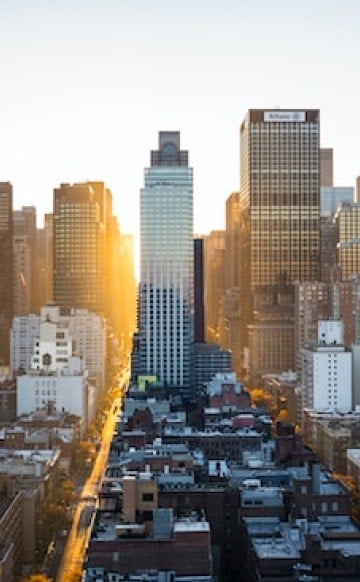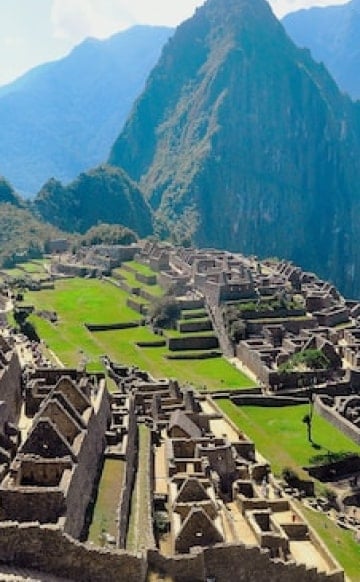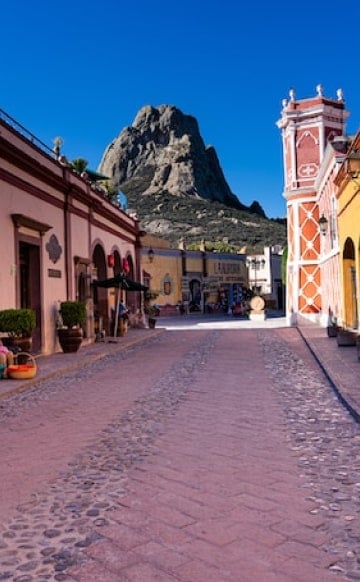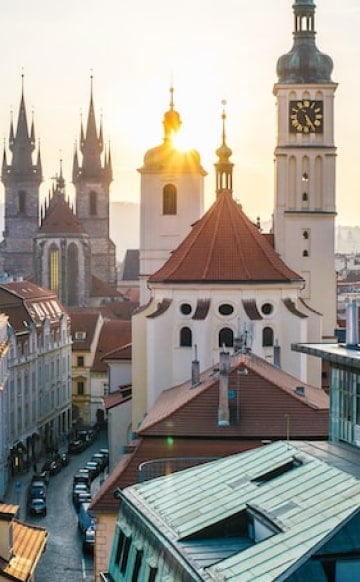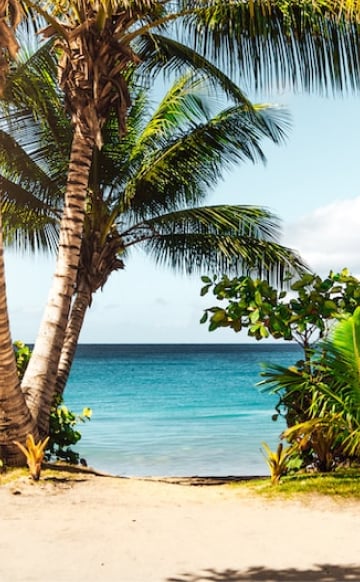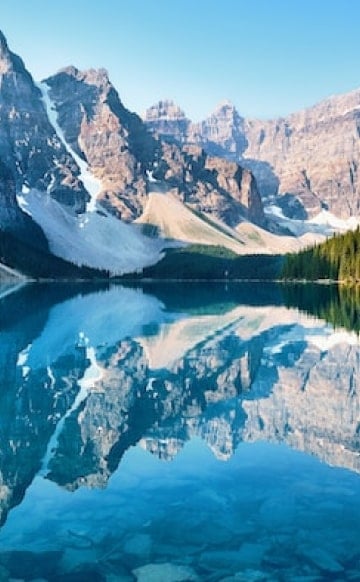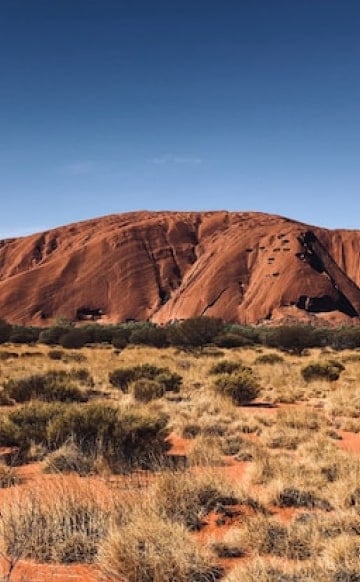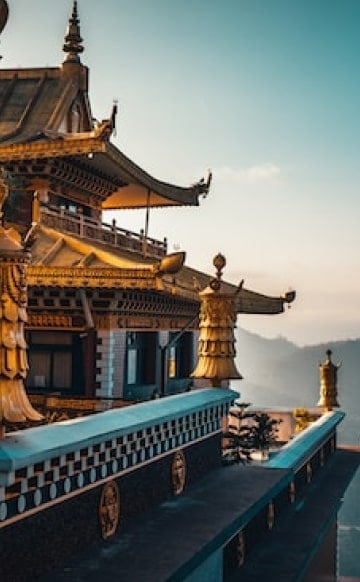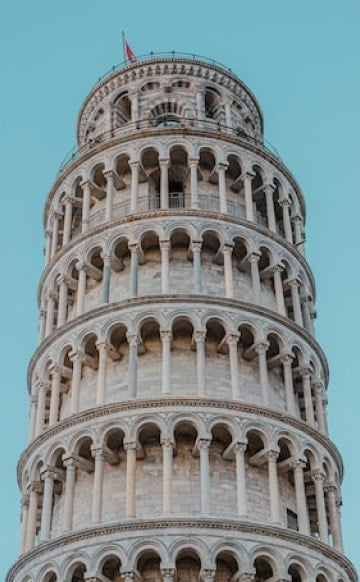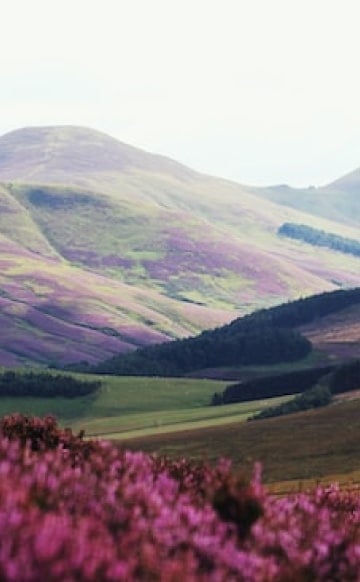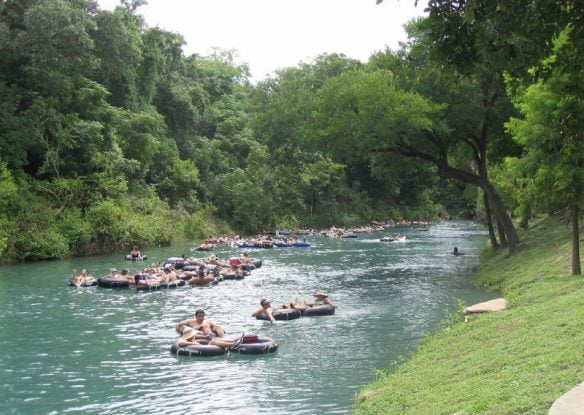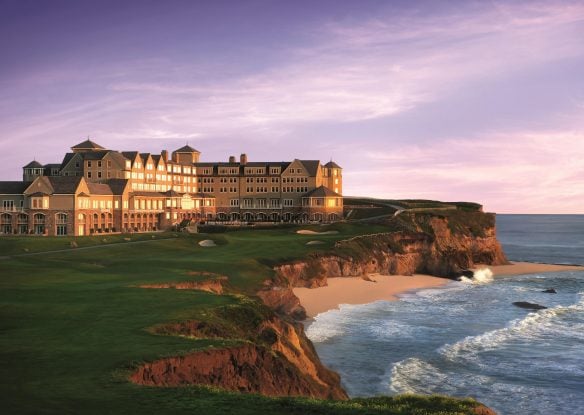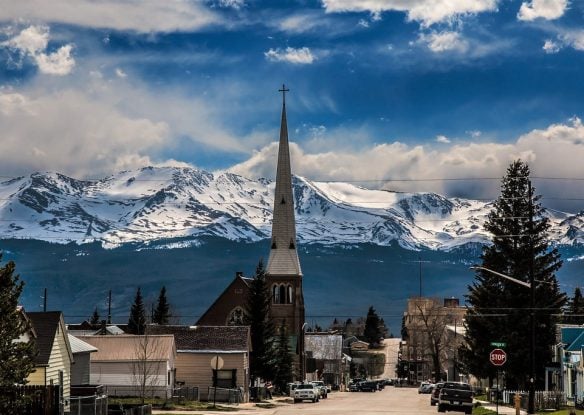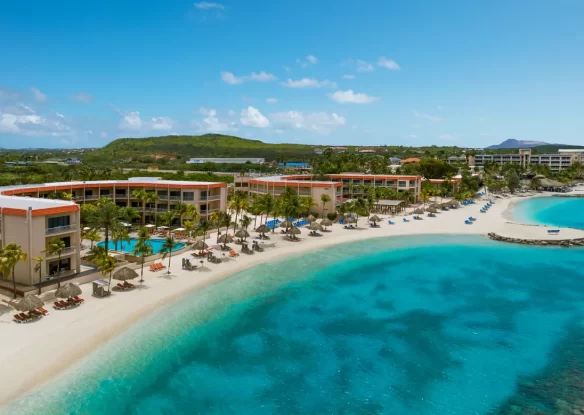When you think about impressive landmarks, the Roman Colosseum, the Eiffel Tower and the Pyramids of Egypt may be some of the first that come to mind, but there are an array of spectacular landmarks that can be seen right in the U.S. From the Golden Gate Bridge in San Francisco to New York City’s Grand Central Terminal, here are some of the most beautiful.

Golden Gate Bridge, San Francisco
A top attraction in San Francisco, the Golden Gate Bridge is a California icon, a 1.7-mile span connecting San Francisco with Marin County and cities further north. Soaring 746 feet above the often mist-enshrouded waters of the bay, this suspension bridge painted in a hue officially known as International Orange is just as stunning today as it was when it was completed in 1937. This is one landmark that certainly can’t be missed while you’re in the City by the Bay. If you don’t have time to walk the entire stretch, walk at least partway for the quintessential San Francisco experience and some of the most dramatic views in the city. For a really unique view of the bridge, drive north across it and turn left into the Marin Headlands, where you can walk and take in incredible vistas of the bridge with the city skyline as the backdrop.

Niagara Falls, New York
Niagara Falls is one of the most famous waterfalls in the world. Marking the U.S. and Canada border, more than 750,000 gallons of water per second thunder down the 167-foot waterfall known as the most powerful on the continent. It’s made up of two sections, Horseshoe Falls on the Canadian side and American Falls on the American side, separated by an island. While some say Horseshoe is the more spectacular of the two, this landmark overall has held a special place in American history ever since 1901 when Michigan teacher Annie Edson Taylor became the first person to go over the falls and survive in a barrel.

Mount Rushmore, South Dakota
Mount Rushmore, the star of one of the pivotal scenes in “North by Northwest” when Cary Grant crawled across the face of the monument, was carved into a granite mountain face in the beautiful Black Hills of South Dakota. It took Gutzon Borglum and a crew of 400 to create the monument that showcases four of America’s most influential presidents (George Washington, Thomas Jefferson, Abraham Lincoln, and Theodore Roosevelt) between 1927 and 1941. It was considered an extraordinary feat of engineering then, and it’s still extremely impressive today, drawing some two million visitors every year. The scenery, wildlife, and attractions in the surrounding area make for an especially unforgettable getaway.

Devils Tower, Wyoming
Just west of the Black Hills in northeastern Wyoming, Devils Tower has been sacred to Native Americans for centuries, although it was the sci-fi flick “Close Encounters of the Third Kind” that put it on the map. In the film, the distinctive rock formation was used as a UFO landing site. While sci-fi fans are sure to be impressed, it’s really a must-see landmark for all. The flat-topped volcanic formation looms more than 1,200 feet above the plains and is a true, one-of-a-kind natural wonder. If you want to climb it, you’ll need some pretty decent technical skills, but it’s easy to walk around by following a 1.3-mile, mostly flat, oval path.

Monument Valley, Arizona/Utah
Monument Valley is one of America’s most breathtaking and iconic landmarks as well as what may be the most enduring image of the American West. Straddling the Utah and Arizona border on a Navajo Tribal Park, isolated red mesas and buttes sculpted by the wind into hand-like shapes are dotted across the empty, sandy desert that’s been filmed and photographed countless times over the years. The landscape was immortalized in Western movies like “The Searchers,” but there’s still nothing like seeing it in person. The natural colors really are as vivid as they seem on the big and small screen. The wide, flat, and sometimes desolate terrain is interrupted by crumbling formations that rise hundreds of feet into the sky as the last remnants of sandstone layers that once covered this entire region.

Mystic Seaport Museum, Connecticut
Mystic Seaport is the nation’s leading maritime museum. Founded in 1929, this landmark is home to four National Historic Landmark vessels, including the Charles W. Morgan, the last wooden whaleship in the world. It features a working preservation shipyard, a recreated 19th-century seafaring village, fascinating exhibits, and a planetarium. You’ll even have the chance to get out on the water and explore the historic Mystic River from mid-May through mid-October. The museum’s collection includes over 500 historic vessels and one of the largest collections of maritime photography in the country.

Monticello, Virginia
Monticello is an extensive Palladian mansion that was designed and built by Thomas Jefferson himself. Located in the hills just outside Charlottesville, it’s an especially picturesque setting for the palatial house with huge windows, skylights, and thousands of artifacts that include an illustrated engraving of the third president’s greatest work, the Declaration of Independence. In 1987, it was recognized as a UNESCO World Heritage Site at the same time as the Great Wall of China, the Acropolis in Athens, the city of Venice and its lagoon, and the Roman City of Bath in the United Kingdom were also tapped – a very distinguished list and Monticello is the only home in America to be recognized as such.

Haystack Rock, Oregon
The beautiful seaside town of Cannon Beach is recognized by its well-known landmark, Haystack Rock. The mammoth monolith sits on a breathtaking stretch of Oregon coastline, formed as a result of lava flow 10 to 17 million years ago. The 235-foot-tall rock formation is the third tallest intertidal structure on the planet. Often accessible at low tide, the shallow tide pools that surround it are typically filled with all sorts of colorful creatures like starfish and hermit crabs – you might just spot some nesting seabirds, including tufted puffins too, while humpbacks and other whales can occasionally be glimpsed in the distance.

Oak Alley Plantation, Louisiana
Oak Alley Plantation, named for the quarter-mile entrance canopy of 300-year-old oak trees, has been crowned the “Grande Dame of the Great River Road.” It allows visitors to experience a bygone era in one of the most beautiful settings in the south. You’ll marvel at the magnificent Oaks, view majestic Cypress trees in swamps bordering the Mississippi River and have the chance to visit reconstructed slave quarters. By taking a tour, you’ll hear fascinating tales of the home known as Big House with a guide in period dress. One of the most photographed plantations in the country, Oak Alley has been the setting for a number of films, including “Interview with a Vampire,” and Bo and Hope’s wedding from the daytime soap, “Days of Our Lives.”

Portland Head Light - Cape Elizabeth, Maine
One of the oldest landmarks of its kind in the country, Portland Head Light was constructed over 200 years ago, lit by whale-oil lamps for the first time in 1791. Set upon beautifully landscaped grounds in Cape Elizabeth’s Fort Williams Park, the 92-foot-tall white conical tower is often considered as a symbol of Maine’s striking beauty. You can gaze up at it while picnicking in the park, open year-round, or climb the tower on Open Lighthouse Day, held annually in September – if you’re lucky enough to get a ticket, as fewer than 300 are given out. From here, you’ll take in endless ocean and rocky coastline views along with the crisp salt air.

Grand Canyon, Arizona
Vast and spectacularly beautiful, the Grand Canyon is not only Arizona’s most distinguishable landmark but it’s also one of the top attractions in the entire nation as a natural wonder that must be seen to be believed. It stretches 277 miles from end to end, with its steep, rocky walls descending over a mile down to the canyon floor where the Colorado River winds its course southwest. Enjoy impressive views from the popular South Rim or the less traveled by equally as grand North Rim. No matter which vantage point you choose, your breath will surely be taken away.

Crater Lake, Oregon
Formed nearly 8,000 years ago when a massive eruption allegedly caused Mount Mazama to collapse, this striking, deep blue freshwater lake part of Crater Lake National Park plunges nearly 2,000 feet below ground as the deepest in the U.S. and the seventh deepest on earth. It also happens to be a great place to dive with lots to explore in its crystal-clear shallows, including lava formations and underwater moss meadows. If you’d rather stay dry, hop aboard a Wizard Island boat cruise around the crater’s island instead.

Space Needle, Seattle
Seattle’s iconic symbol, the Space Needle, designated a historic landmark in 1999, was built for the 1962 World’s Fair and features an observation deck at 520 feet as well as a rotating restaurant at 500 feet with 360-degree city views. On a clear day, the downtown Seattle skyline, Olympic and Cascade Mountains, Mount Rainier, Mount Baker, Elliott Bay and area islands can all be viewed from the top. The best way to access the observation deck is by making a reservation at Skycity Restaurant, and you’ll be able to take the 41-second elevator ride up for free. Enjoying a fabulous meal along with the ever-changing views in the slowly rotating eatery makes for an especially unforgettable experience.

Old Faithful, Yellowstone National Park, Wyoming
Old Faithful, the world’s most famous geyser, has large eruptions occurring an average of about once every 90 minutes. Discovered in 1870 by the Washburn Expedition, whose members happened to have stumbled upon it during an eruption, you’ll have the chance to understand what those early explorers must have felt upon viewing it for the first time. A top attraction in Yellowstone, it shoots water about 135 feet into the air, though it’s been known to soar as high as 190 feet. Just before the big show, the water begins to gurgle and splash in anticipation as the pressure builds – suddenly, one splash is more forceful than the others, and within seconds, the columns of water erupt, lasting anywhere from 90 seconds to five minutes. Located in the Upper Geyser Basin of Yellowstone National Park, the basin contains some 150 geysers within just a one-square-mile area.

Havasupai Falls, Arizona
Certainly one of the most magnificent falls you’ll ever lay eyes on, 100-foot Havasupai Falls on the Havasupai Indian Reservation in Arizona is so awe-inspiring words cannot do it justice. It spills down fiery red cliffs into a brilliant cerulean pool surrounded by thick green vegetation. A number of other falls found throughout this paradise-like valley, including Mooney Falls and Beaver Falls, have carved-out basins in the travertine rock-forming idyllic pools for bathing. Although you’ll have to hike about ten miles to reach them, it’s well worth the effort.

Denali, Alaska
Denali, at an incredible 20,320 feet, is North America’s highest peak and an especially stunning sight when you can catch its alpenglow in Wonder Lake. The most recognizable landmark in Denali National Park can be viewed from a number of vantage points. Some climb it, though it takes several weeks as well as requiring a high level of endurance and fitness. For an up-close view without expending such extreme effort, you might consider a plane trip leaving from one of the towns near the park, like Talkeetna, Denali Park, or Healy. Train and bus rides are also available, departing from the park’s entrance area.

Temple Square and Salt Lake Temple - Salt Lake City, Utah
Temple Square is Salt Lake City’s most popular attraction, best known for its grand, six-spired granite temple, constructed over a period of 40 years, from the laying of its cornerstones in 1853 to its dedication in 1893. Considered the house of the Lord, sacred to members of The Church of Jesus Christ of Latter-day Saints, it is the largest LDS temple floor area at 235,015 square feet. Though the temple itself is not open to the public, the grounds, including lovely flower gardens and fountains, as well as two visitor centers, are open to tour.

Boston Common - Boston, Massachusetts
Boston Common is the oldest public park in America, dating back to 1635 when Puritan colonists originally purchased the 44 acres for their livestock to graze on. Located in downtown Boston, it was used as a camp by the British before the American Revolutionary War, from which they left for the Battle of Lexington and Concord. It was even used for public hangings, up until 1817, including Mary Dyer, who was hanged by Puritans in 1660 for preaching Quakerism. Today, it’s a picturesque haven, popular for activities like rides on swan boats in the adjacent Public Garden Lagoon as well as picnics and accessing the 2.5-mile Freedom Trail which begins in the park.

Cape Hatteras Lighthouse, North Carolina
The Cape Hatteras Lighthouse is the tallest brick lighthouse in North America, standing at 210 feet overlooking one of the most ominous spots in maritime history. The “Graveyard of the Atlantic,” was originally constructed in the late 1700s, though today’s lighthouse was built in 1870. Its spiraling black-and-white pattern was added a few years later to help mariners distinguish it while they sailed along the coast of North Carolina’s Outer Banks. The lighthouse, with a beacon that can be seen for nearly 20 miles out to sea, continues to safeguard what’s known as one of the most dangerous sections of the Atlantic coast – more than 2,000 ships have been wrecked on sandbars in the area over the past 500 years.

The Giant Forest, California
Nestled in the southern Sierra Nevada Mountains of California inside Sequoia National Park is the Giant Forest, a three-square-mile forest of colossal giant sequoias, including the General Sherman Tree, the world’s single largest living tree – and, the largest organism, by volume, alive today. In fact, five of the 10 largest living trees on the planet are here. The trees, on average, are as tall as 26-story buildings and have base diameters wider than many city streets. Perhaps even more impressive is their age – most are between 1,800 and 2,700 years old. The best way to see it is to take the two-mile hike on the Congress Trail, beginning at the General Sherman Tree.

The Breakers - Newport, Rhode Island
The Breakers, a National Historic Landmark operated by the Preservation Society of Newport County, is known as the grandest of all Newport’s mansions and a symbol of the Vanderbilt family’s social and financial preeminence during turn-of-the-century America, was built as a summer home for Cornelius Vanderbilt II in 1893. It has more than 65,000 square feet of indoor space along with a perfectly manicured 13-acre lawn overlooking the Atlantic. Commodore Cornelius Vanderbilt (1794-1877) established the family fortune in steamships and later in the New York Central Railroad, a pivotal development in the industrial growth of the nation during the late 19th century.

The Statue of Liberty, New York
Built in 1886 as France’s gift to America, the Statue of Liberty remains a famous world symbol of freedom and one of the country’s greatest icons. It’s the largest statue on the planet, standing nearly 152 feet high atop an 890-foot pedestal on Liberty Island. The statue offers a beautiful view of lower Manhattan and New York Harbor, though one of the best ways to see the statue itself is on the ferry from Battery Park. As you approach, you’ll see it grow from a vaguely defined figure on the horizon into the towering and stately monument it truly is.

Mono Lake, California
Estimated to be 760,000 years old, one of the oldest lakes in the western hemisphere, Mono Lake is one of the state’s most stunning sightseeing spots, thanks to Los Angeles’s water diversion efforts which began in 1941. Some 40 years later the lake had lost a little over half its surface area, revealing once-submerged limestone known as tufa, which now forms magnificent jutting towers across the surface of the water. The saltwater lake is hauntingly beautiful, reflecting the snow-capped Sierra Nevada in its glistening dark blue waters. The salty water not only makes swimmers float like a cork, but it sustains trillions of brine shrimp, attracting millions of migratory birds to feast on them.

Hoover Dam, Arizona/Nevada
Without Hoover Dam, located in the Black Canyon on the Arizona/Nevada border, there would be no Las Vegas, at least as we know it. The neon and glitz simply wouldn’t exist – in fact, the growth of America’s Southwest can be tied directly to the electricity that’s created by the dam. Funded by Congress during the Depress, it controls floods, provides irrigation water, and produces hydroelectric power. Regarded as an engineering marvel, the massive concrete dam stands 726 feet tall and draws an estimated one million visitors every year. Visitors can learn about the dam in the visitor center and take a guided tour which includes an elevator ride in the canyon wall and see the power plant and generators.

Grand Central Terminal, New York City
Commonly referred to as “Grand Central Station,” the historic Grand Central Terminal is a famous New York City landmark in Midtown Manhattan that was constructed in 1871. It’s not only one of the busiest train stations in the world, serving nearly 200,000 local commuters every day, but it’s also absolutely breathtaking, with the interior as magnificent as its exterior. The cavernous main concourse is filled with dazzling architectural details, most notably the domed gold and cerulean blue ceiling painted with astronomical signs studded with fiber-optic stars, the information booth with its four-faced clock, palatial mezzanines, grand staircases, and arched passageways.
